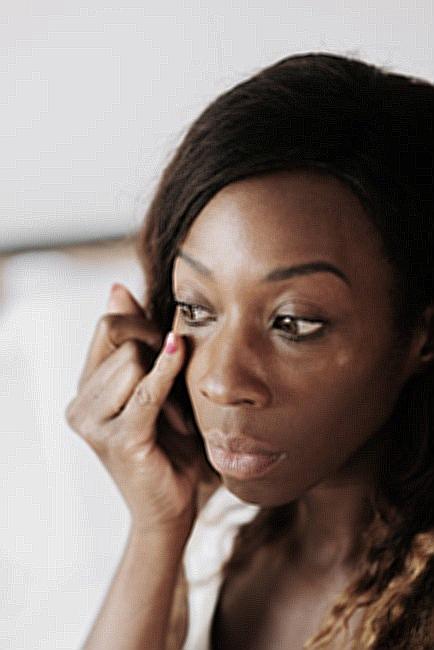Eye Care in Edmonton is a crucial part of maintaining good overall health. The eyes are considered the windows to the world, and our ability to see clearly and comfortably can significantly impact our quality of life. Edmonton is a thriving city in Canada that boasts a growing population, many of whom depend on their vision to carry out their daily tasks at work, school or home. Eye care services in Edmonton are readily available, ranging from routine eye exams to advanced surgical procedures.
There are many optometrists and ophthalmologists in Edmonton who provide excellent eye care services, including diagnosing and treating various eye conditions. Eye care professionals in Edmonton understand that everyone’s eyes are unique, and they strive to provide personalized care based on individual needs. Patients can expect friendly, professional service from eye care clinics and a welcoming atmosphere. They are usually equipped with state-of-the-art diagnostic technologies for accurate and timely diagnosis.
Eye care in Edmonton is available for patients of all ages, including children. Pediatric eye care in Edmonton plays a vital role in detecting and treating vision problems in children early. Children who develop eye problems early on are more likely to experience difficulties with learning, coordination and development. Parents in Edmonton can take their children for regular eye exams through their pediatrician, pediatric ophthalmologist, or optometrist.
In summary, eye care in Edmonton plays an important role in maintaining good eye health and overall quality of life. Patients in Edmonton can expect exceptional eye care services, from routine eye exams to advanced surgical procedures. The eye care professionals in Edmonton are dedicated to providing personalized care to ensure their patients’ vision is as clear and comfortable as possible.
What Is An Optometrist?
An optometrist is a healthcare professional who specializes in the diagnosis and treatment of eye and vision problems. They are not medical doctors, but they hold a Doctor of Optometry (OD) degree and are licensed to practice optometry.
Optometrists are trained to perform comprehensive eye exams, prescribe eyeglasses and contact lenses, detect and manage eye disorders, and provide treatment for certain eye conditions. They also provide advice on maintaining proper eye health and preventing eye diseases.
Optometrists work in a variety of settings, including private practices, hospitals, clinics, community health centers, and retail establishments.
What Does An Eye Exam Consist Of?
An eye exam is a comprehensive evaluation of the health and function of the eyes. It typically consists of several tests and procedures, including:
– Visual acuity test: This test measures how well you can see at a distance and up close.
– Refraction test: This test determines the best prescription for corrective lenses.
– Eye movement test: This test evaluates how well your eyes move and work together.
– Pupil dilation: This procedure involves the use of eye drops to enlarge the pupils to allow a closer look at the eye’s interior.
– Tonometry: This test measures the pressure inside the eye, which is crucial for detecting glaucoma.
– Eye muscle test: This test evaluates the muscles that control eye movement and positioning.
– Comprehensive eye health evaluation: This evaluation checks for eye diseases, including cataracts, macular degeneration, and diabetic retinopathy.
How Can I Prevent Eye Strain?
Eye strain, also known as asthenopia, is a common condition caused by prolonged use of digital devices or reading. The following tips can help prevent eye strain:
– Make sure your computer screen is at a comfortable distance and height.
– Take regular breaks to rest your eyes, look away from the screen, and focus on distant objects.
– Adjust the lighting to reduce glare.
– Use lubricating eye drops to prevent dry eyes.
– Practice the 20-20-20 rule: Every 20 minutes, take a 20-second break and focus on something 20 feet away.

– Wear prescription eyeglasses, if necessary.
What Is Lasik Eye Surgery?
LASIK, or laser-assisted in situ keratomileusis, is a surgical procedure that reshapes the cornea to improve vision. It is used to treat refractive errors, such as nearsightedness, farsightedness, and astigmatism.
During the procedure, a laser is used to create a thin flap in the cornea, which is then folded back to expose the underlying tissue. Another laser is then used to remove a small amount of tissue to reshape the cornea. The flap is then placed back in position and left to heal.
LASIK is a safe and effective method for correcting refractive errors, and most patients experience improved vision within a few days of the procedure.
What Are The Common Eye Diseases?
There are numerous eye diseases that can affect the health and function of your eyes. Some of the most common include:
– Cataracts: A clouding of the eye’s natural lens that can cause vision loss.
– Glaucoma: A group of eye diseases that damage the optic nerve and can lead to blindness.
– Age-related macular degeneration (AMD): A condition that affects the macula, the part of the retina responsible for central vision.
– Diabetic retinopathy: A complication of diabetes that damages the blood vessels in the retina.
– Dry eye syndrome: A condition in which the eyes do not produce enough tears or are of poor quality.
– Conjunctivitis: An inflammation of the conjunctiva, the thin membrane that covers the white of the eye.
What Is Age-Related Macular Degeneration?
Age-related macular degeneration (AMD) is a progressive eye disease that affects the macula, the part of the retina responsible for sharp, central vision. It is the leading cause of severe vision loss in people over the age of 50.
AMD occurs when the macula begins to deteriorate, causing blurred or distorted vision. There are two types of AMD: dry AMD and wet AMD. Dry AMD is the more common form and progresses slowly, while wet AMD develops quickly and can cause significant vision loss.
There is currently no cure for AMD, but treatments, such as anti-angiogenic drugs and photodynamic therapy, can help slow the progression of the disease.
What Is Glaucoma?
Glaucoma is a group of eye diseases that damage the optic nerve and can lead to blindness. It is typically caused by a buildup of fluid in the eye, which increases the pressure and damages the optic nerve.
There are several types of glaucoma, including open-angle glaucoma, angle-closure glaucoma, and congenital glaucoma. Open-angle glaucoma is the most common form and typically develops slowly, while angle-closure glaucoma is a medical emergency that requires immediate treatment.
Treatment for glaucoma typically involves the use of eye drops, oral medications, laser therapy, or surgery to lower the intraocular pressure and prevent further damage to the optic nerve.
What Are Cataracts?
Cataracts are a common eye condition characterized by a clouding of the eye’s natural lens, which can cause blurred vision, sensitivity to light, and difficulty seeing at night.
Cataracts typically develop slowly over time and are most often associated with aging, but they can also be caused by injury, certain medications, and certain medical conditions.
The only effective treatment for cataracts is surgery to remove the clouded lens and replace it with an artificial one. The surgery is quick, safe, and typically requires minimal recovery time.
What Are The Symptoms Of Dry Eye Syndrome?
Dry eye syndrome is a condition in which the eyes do not produce enough tears or are of poor quality. Common symptoms include:
– Stinging or burning sensation in the eyes
– Itchy or dry eyes

– Redness or swelling around the eyes
– Sensitivity to light
– Blurry vision
– Difficulty wearing contact lenses
If left untreated, dry eye syndrome can lead to more serious eye conditions, such as corneal ulcers and infections.
What Are The Different Types Of Contact Lenses?
There are several different types of contact lenses available, including:
– Soft contact lenses: These lenses are made of a soft, flexible plastic material that conforms to the shape of the eye. They are comfortable to wear and come in a variety of colors and prescriptions.
– Rigid gas-permeable contact lenses: These lenses are made of a firm material that allows oxygen to pass through to the eye. They are more durable than soft lenses but can be less comfortable to wear.
– Hybrid contact lenses: These lenses combine the comfort of soft lenses with the stability of rigid lenses.
– Toric contact lenses: These lenses are designed specifically for people with astigmatism and correct vision by using different powers in different meridians of the lens.
– Multifocal contact lenses: These lenses are designed to improve both distance and close-up vision for people with presbyopia.
How Do I Care For My Contact Lenses?
To care for your contact lenses, you should:
– Wash your hands thoroughly before handling the lenses.
– Use only the recommended cleaning and disinfecting solutions.
– Replace the lens case every three months.
– Only wear your lenses for the recommended amount of time.

– Remove your lenses before swimming or showering.
– Follow your optometrist’s instructions for inserting and removing your lenses.
Why Is It Important To Wear Sunglasses?
Sunglasses do more than just look cool – they also protect your eyes from harmful UV rays. Exposure to UV radiation can increase your risk of developing cataracts, macular degeneration, and other eye conditions.
When choosing sunglasses, look for ones that block 99% to 100% of both UVA and UVB rays. Polarized lenses can also help reduce glare and improve visibility in bright sunlight.
How Often Should I Get An Eye Exam?
It is recommended that you get a comprehensive eye exam every one to two years, depending on your age, overall health, and risk factors for eye disease. Children should have their first eye exam at six months of age, with follow-up exams at age three and before starting school.
Individuals over the age of 60, those with a family history of eye disease, and those with certain medical conditions, such as diabetes, should have their eyes examined more frequently. Regular eye exams are essential for maintaining good eye health and detecting and treating eye diseases early.
Conclusion
In conclusion, Eye Care Edmonton is a valuable resource for those in need of vision care services in the city of Edmonton. The clinic offers comprehensive eye exams using the latest technology to accurately assess the overall health of patients’ eyes, as well as providing a wide range of eyewear options and contact lens fittings.
Additionally, the clinic is staffed by a team of experienced and knowledgeable optometrists who are committed to providing the best possible care to their patients. They take the time to listen to their patients’ concerns and provide personalized recommendations to address their individual needs.
Another benefit of Eye Care Edmonton is its convenient location, making it easily accessible for residents of the city. The clinic also offers flexible hours, which allows patients to schedule appointments at a time that works best for them.
Overall, Eye Care Edmonton is a top-notch vision care provider that cares about its patients’ eye health and well-being. Its commitment to providing quality care, using the latest technology, and personalized recommendations makes it an excellent choice for anyone in need of vision care services in Edmonton.



